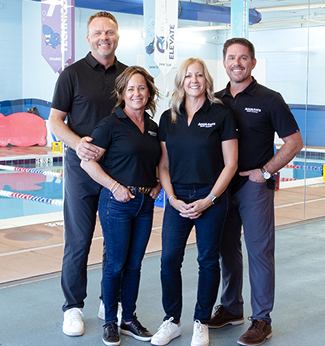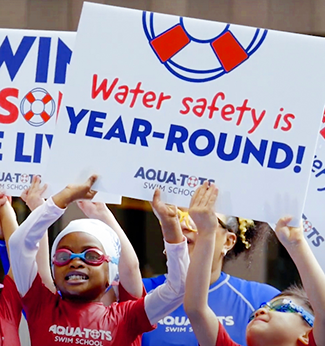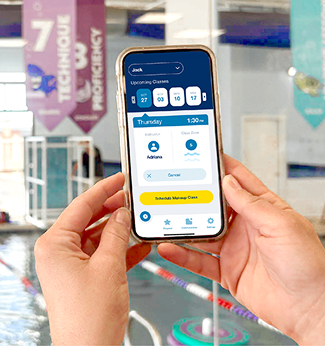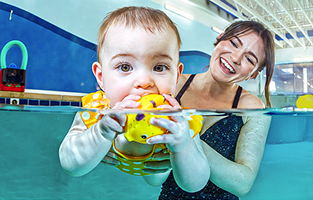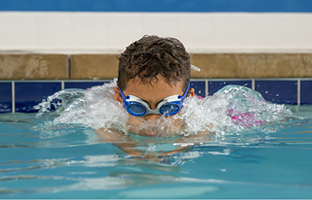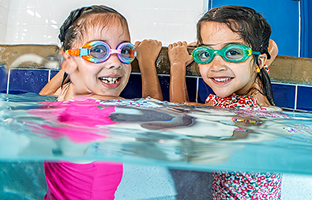What Swimming Is… And What Swimming Is Not!

Summer may be speeding by, but the need for water safety is year-round! Even if your child seems “good enough” at swimming during summer, true water confidence means having the skills to stay safe in any situation—for their entire life.
From confident kicking to breath control, each skill has a purpose—and when they all come together at the completion of Level 6, your child becomes a safe, confident swimmer, ready for any water adventure. That’s why it’s important for parents to know the difference between what true swimming is and what it is not. Read on to learn more about swimming skills for kids!
Breath Control
- What it is not and why: It’s not holding your breath for as long as possible underwater or coming up gasping after every stroke. These habits can lead to panic, fatigue, and unsafe swimming. Real breath control is about rhythm and confidence, not breath-holding contests.
- What it is: Swimming on their stomach and rolling to their side to breathe, then continuing without stopping.
- Why it matters: Breathing while swimming is what keeps them moving. Without this skill, kids stop short and struggle.
- Real-life scenario: A family lake day means no pool edges and no shallow zones. Breath control keeps your child from getting winded, helping them swim back to shore with confidence.

Confident Kicking Skills
- What it is not and why: Kicking frantically or splashing in place. Random or weak kicks waste energy and don’t move your child efficiently through the water—especially when they need to get to the edge quickly.
- What it is: Kicking with strength and control on both their stomach and back to move efficiently through the water.
- Why it matters: Our legs contain some of the body’s strongest muscles, which is why swimming with horizontal movement is key. It allows for powerful kicks that help children move efficiently, reach the wall quickly, and exit the pool safely and confidently. Whether they fall into a pool or are swimming to the side for fun, being able to move through the water is everything.
- Real-life scenario: Your child jumps into the deep end after watching a sibling and realizes they’re farther than they thought. Strong kicking helps them get to the wall before panic sets in.
Treading Water for Kids
- What it is not and why: Holding onto a floatie or life ring. Floaties are toys and not lifesaving devices. Even life rings cannot replace the endurance, strength, and real swimming skills needed to stay afloat.
- What it is: Staying afloat independently for 45–60 seconds without touching the bottom or grabbing onto anything.
- Why it matters: Treading gives your child precious time—whether they’re waiting for help or making a plan.
- Real-life scenario: Playing a game of catch or tag with friends in the deep end means lots of quick stops. Treading helps your child stay upright and catch their breath between plays.

Swim Skill Coordination
- What it is not and why: Random movements that look like swimming, but without arms and legs working together, kids tire quickly and can’t stay in control.
- What it is: Arms and legs must be working in sync to move efficiently and effectively through the water.
- Why it matters: Proper coordination prevents fatigue and helps children swim longer, safer, and with more control.
- Real-life scenario: A cousin’s birthday party has a big, crowded pool. Your child navigates around others with ease, and thanks to coordinated strokes, they stay in control and keep swimming confidently.
Freestyle Confidence
- What it is not: Flailing arms and staying vertical. When kids swim upright and splash in place more than they move forward, it’s a sign they’re still learning how to use their bodies effectively in the water.
- What it is: Swimming 10–12 feet with their face submerged and body in a horizontal position—calm, controlled and confidently moving through the water.
- Why it matters: This skill builds the strength, form, and confidence kids need to navigate deeper water safely and efficiently.
- Real-life scenario: You’re swimming with friends, and your child wants to show off their “big kid” skills. They swim the full length of the pool without stopping—and you realize just how far they’ve come.

Mastering Swim Strokes
- What it is not and why: Doggie paddling to the wall. If your child is doing this, they’re still learning what strong, confident swimming really looks like.
- What it is: Knowing freestyle, backstroke, and breaststroke with proper technique. With the right skills, they’ll glide across the water in a streamlined position.
- Why it matters: Mastering strokes builds stamina, strength, and confidence, making swimming feel easy, not exhausting.
- Real-life scenario: You’re at a resort with a huge pool. Instead of staying on the steps, your child can swim confidently across the pool to join new friends at the slide. You can sit back and relax, knowing that confidence for them means peace of mind for you.
Aqua-Tots is proud to support your child every step—and splash—of the way as they grow into a safe, confident and capable swimmer. With each skill they learn, they’re gaining more than technique; they’re building independence, strength, and a lifelong love for the water. We’re here to help make every moment in the water safer and more fun for your family so you can enjoy a lifetime of safety, confidence, and cherished memories with your loved ones. Help your children learn to swim safely by using our Location Finder at the top of this page to enroll them in year-round swim lessons today!

